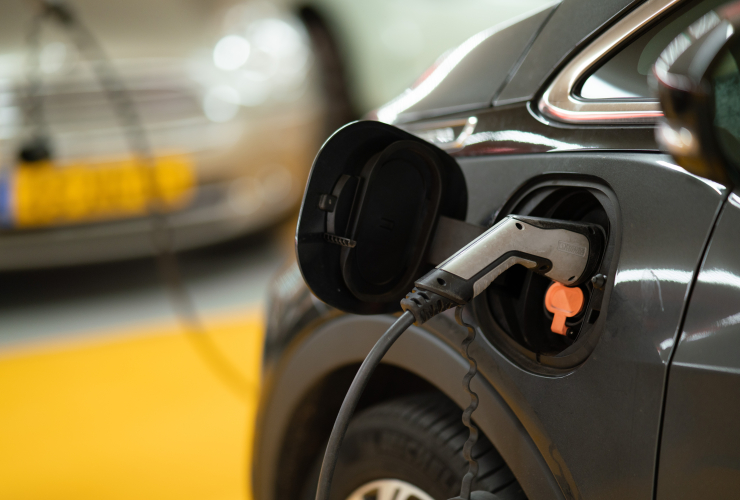With the passing of the U.S. Inflation Reduction Act (IRA), the Biden administration’s landmark climate legislation, Canada needs to step up its game with its own strategies for green industrial policy. Our largest trading partner has finally made a decisive move on industrial policy in support of a net-zero transition. Canada should welcome this major commitment to reducing greenhouse gas emissions because it benefits us all. But the IRA also removes some uncertainty and provides direction on how Canada should steer its economic transition.
Despite its name, the IRA is less about inflation, on which it is expected to have a largely neutral effect, and really about industrial policy. Passed last week by Congress, the IRA comes on the heels of the CHIPS and Science Act to bolster and build out the U.S. semiconductor industry.
Together, these pieces of legislation constitute the most ambitious examples of industrial policy pursued by the U.S. in decades. This development represents a shift in economic policy thinking from globalization, finance, and consumerism towards production, employment, and regional economies — a shift that increasingly attracts cross-partisan support.
The IRA, with US$369 billion focused on energy security and climate change, includes a whole range of targeted incentives across different sectors involving clean energy production and manufacturing. The measures include production tax credits for solar panels, wind turbines, batteries and critical minerals processing and investment tax credits to build manufacturing facilities that make electric vehicles and renewable energy technologies. These incentives place increased pressure on the federal government in Ottawa to work out the details of the investment tax credit for net-zero technologies promised in Budget 2022. Canada also needs to keep pace on tax incentives to not disadvantage our own cleantech sector.
The largest immediate implication of the IRA for Canada’s own net-zero transition concerns the electric vehicles (EV) supply chain. Much attention around the IRA has been on the provisions for EVs, particularly the extension of the US$7,500 tax credit for purchasers. Thanks to lobbying efforts by the Canadian government and industry, the legislation relaxed restrictions in earlier versions concerning Buy American. EVs assembled in Canada will now be eligible, recognizing the highly integrated nature of the North American automotive sector.
The IRA provides some basic incentives. However, as has been noted even in the U.S., further incentives will be necessary to meet the ambitious targets for growth in EV sales over the next dozen years. The challenge for Canada’s automotive industry is to seize and develop opportunities up the supply chain for critical minerals and battery technology. The adoption of the IRA should give a boost to efforts to develop a national strategy for the battery value chain, as proposed by the Transition Accelerator, Battery Metals Association of Canada, Accelerate and the Energy Futures Lab.
The IRA also puts the onus on Canada to develop key economic opportunities for the future net-zero economy. As noted in our recent report, Canada's Future in a Net-Zero World, Canada needs to adopt a strategic approach to identifying and growing the value chains of the future. We highlighted a number of clean competitiveness opportunities, including not only EVs, but also hydrogen, alternative proteins, green chemistry, structural wood products, and low-emissions aluminum, all requiring support by considerable expansion and integration of the electric grid and green transportation corridors.
If successful, the Canadian government’s initiative to establish Regional Energy and Resource Tables takes one important step towards identifying these activities, in partnership with provinces, territories and First Nations. But the hard work will then follow in pursuing specific growth opportunities through the convening of stakeholders, setting of targets and establishing appropriate public-private partnerships to pursue these outside of direct political or bureaucratic influence. This is the recipe being pursued by many of our trading partners and competitors.
A critical component of these strategies is finding ways to align public and private finance given the recognized investment requirement for the net-zero transition of at least $100 billion annually. Budget 2022 announced the creation of a Canada Growth Fund with a focus on investing in low-carbon technologies and opportunities in transforming Canada’s existing industries. The fund will need to play an active role investing in sectors that are critical for net-zero and should also be integrated within the net-zero capital allocation strategy announced in Budget 2022.
Canada needs this long-term perspective in its growth policy. The net-zero economy of 2050 needs to inform how we respond to pressing challenges of the day, such as the pandemic, energy price increases, food crises, etc. Without the medium- and long-term goals in mind, we risk undermining both economic prosperity and our ambitions to reduce greenhouse gas emissions. Thankfully, our most important neighbour and largest trading partner is thinking similarly, and importantly, taking strong action. This makes it more compelling and urgent for Canada to step up our ambitions.
Anik Islam is a research associate at Smart Prosperity Institute and works on sustainable finance, green industrial strategy and green fiscal policy development.
Derek Eaton, PhD, is director of public policy research and outreach at Smart Prosperity Institute where he currently leads teams working on green industrial strategy, finance, and clean growth in agriculture.







Comments